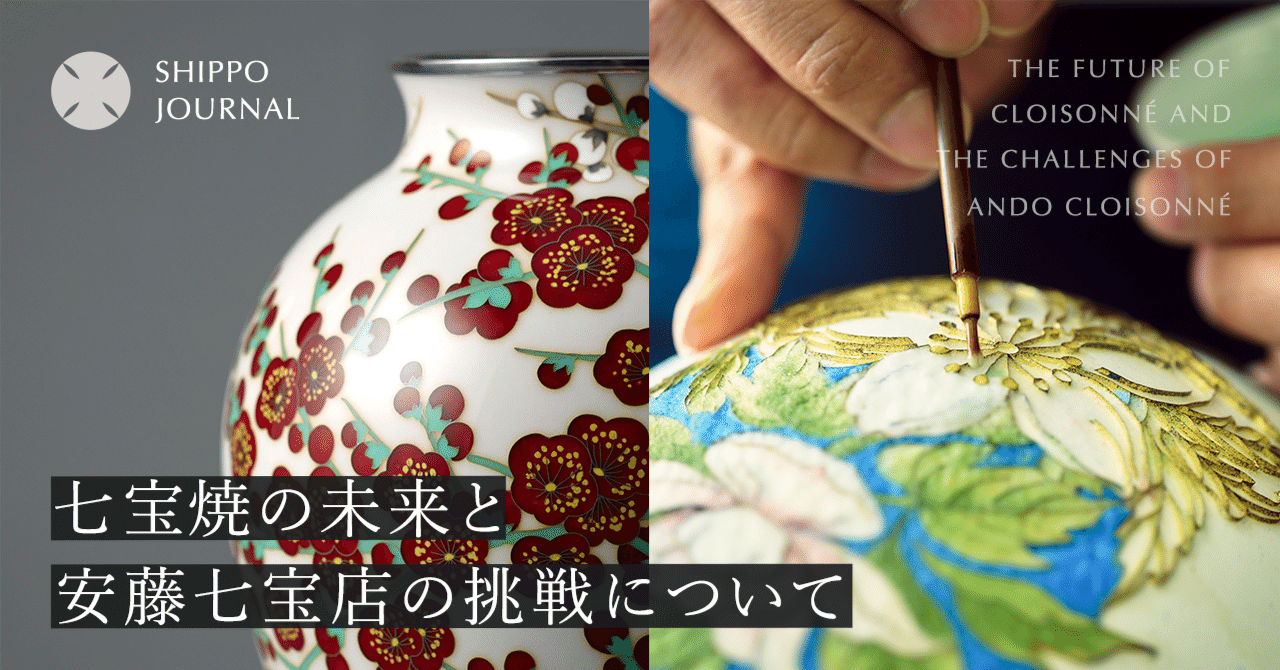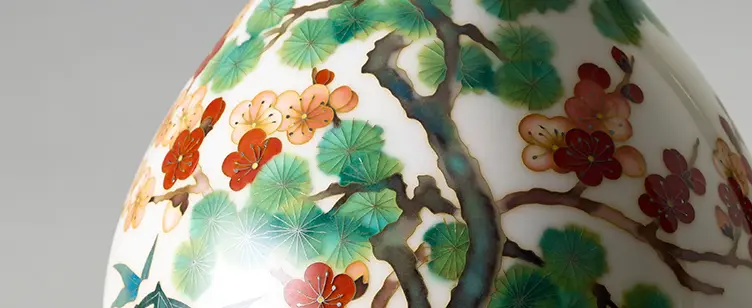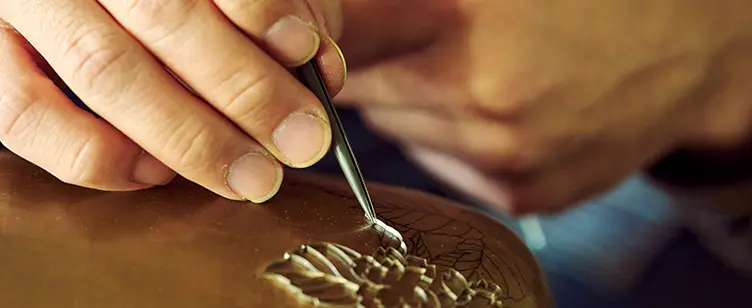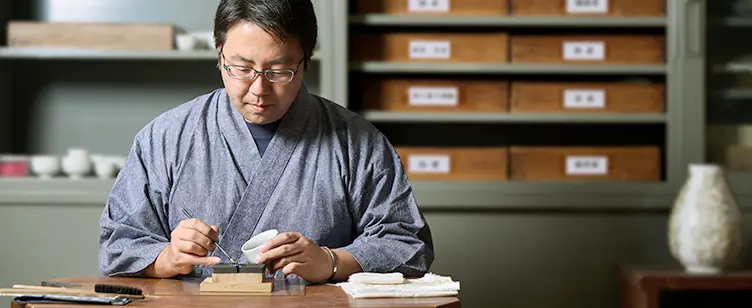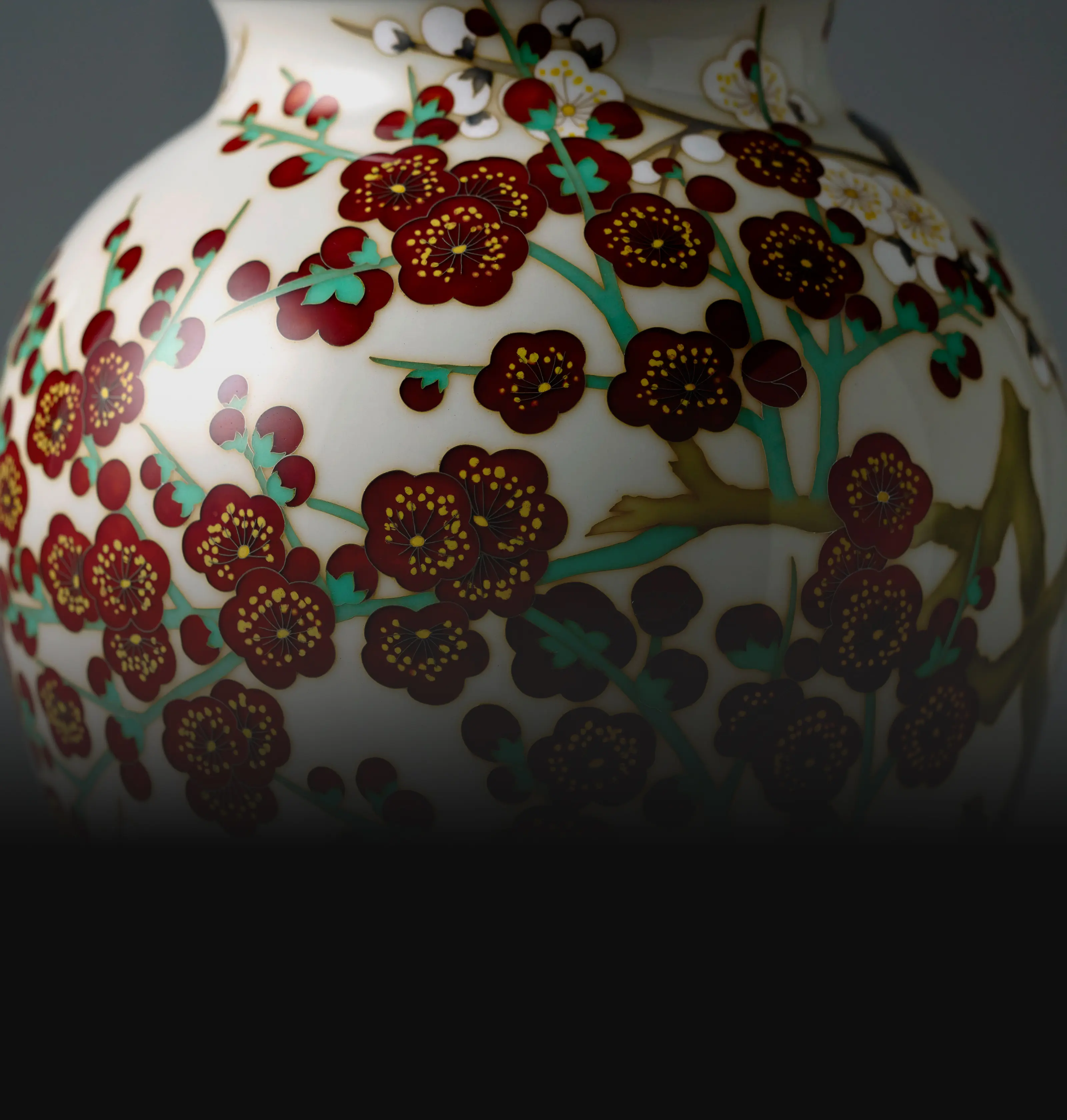Color Expressions of Enamels
Enamels
The enamels used in cloisonne, which create its colors, are powdered glass tinted with added metals. Cloisonne enamels differ from ceramic enamels. First, turning ingredients into glass and then finely grinding them before firing allows for clear and beautiful expressions. The glass enamels offer a wide range of color expressions, from crystal-clear to milky white, and can be layered and fired multiple times to achieve a depth of expression.
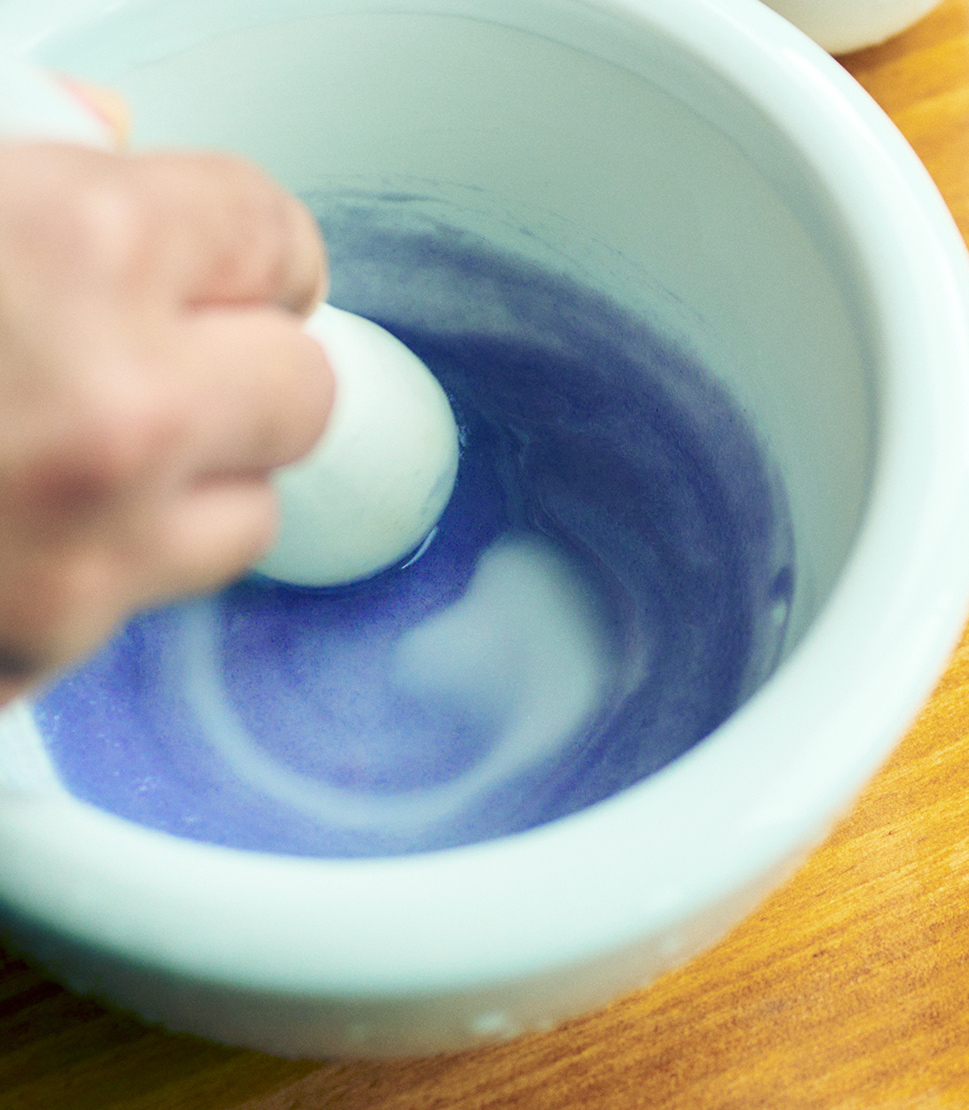
Color in Enamel
Cloisonne enamels come in various types, and their properties significantly affect the ambiance of the artwork. The expression can drastically change depending on the enamel, even using the same shape and design. Here, we introduce the differences in cloisonne enamels.
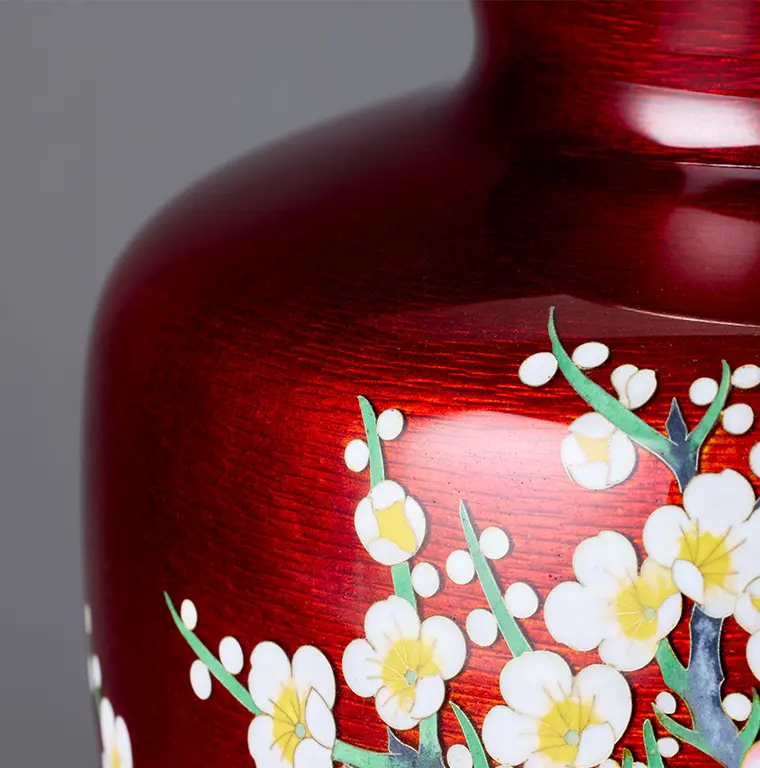
Transparency
Colors Utilizing the Transparency of Glass
Transparent enamels are characterized by their clear hues, taking advantage of glass's inherent properties. As the base material is visible through them, applying an opaque white enamel first and then a transparent one results in a beautifully clear color expression. This type of enamel also enhances the reflection of the metal base by applying patterns on copper or silver to create a unique cloisonne shine.
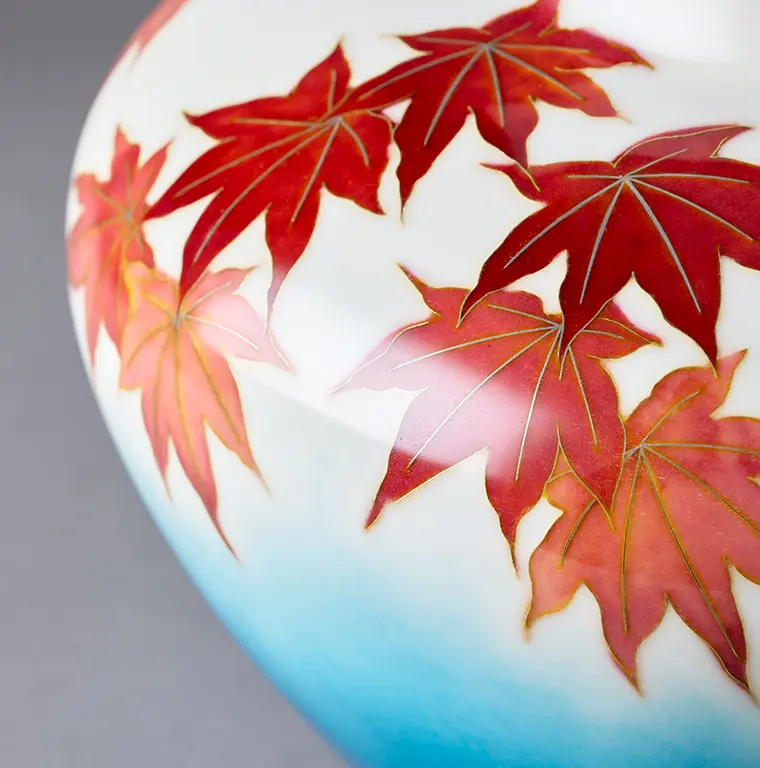
Luster (Semi-transparent)
High Transparency with Pale Pastel Tones
This expression, inspired by the colors of polished gems and pearls, is known as luster in cloisonne. Combining the characteristics of both opaque and transparent enamels, it features a glossy sheen achieved by coating the base with white enamel, resulting in a semi-transparent effect. Predominantly in soft pastel tones, these enamels are suited for creating gentle, elegant expressions.
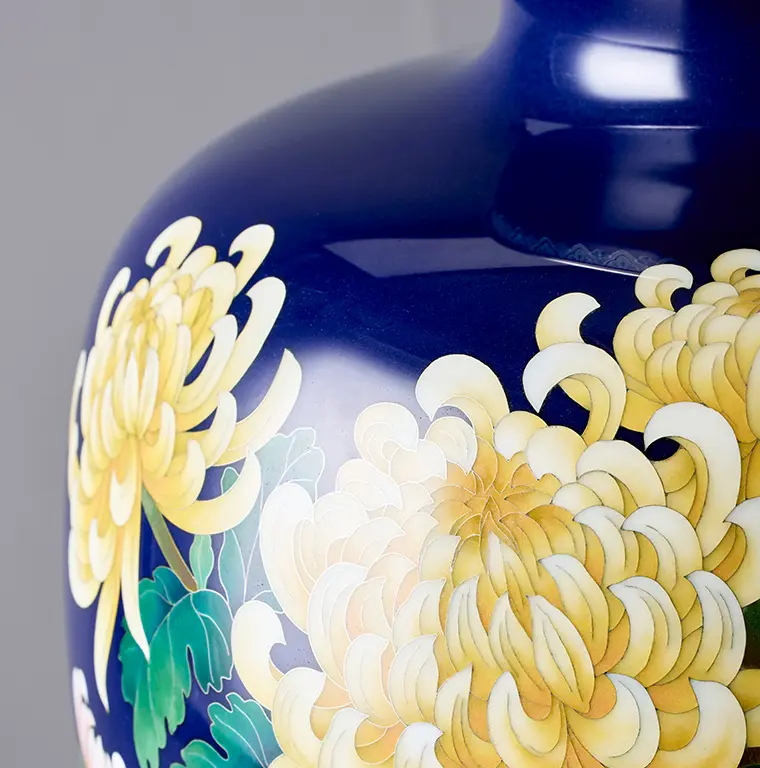
Milky Opaque
Vivid Colors that Show Clearly
Opaque enamels prevent the color of the base material from showing through, thus highlighting the intrinsic color of the enamel itself. These enamels are known for their rich, profound color expressions, often used in works that evoke a calm and settled ambiance. In cloisonne predating the Meiji era, a matte cloisonne called doro shippo was prevalent, primarily using opaque enamels.
Opaque enamels are challenging to handle due to their hardness, requiring high skill levels during enameling and polishing.

About Cloisonne Enamels
Cloisonne enamels are colored glass powders. They are mainly divided into two types: Hon-Shippo enamels used in Owari Cloisonne and Metal enamels used more widely. In the manufacturing process, raw minerals (saltpeter, silica, and minium) are mixed with metal oxide pigments, melted at 1300 degrees Celsius, cooled in water to form a granular substance, and then ground into powder using a mortar or similar tool.
Enamels can't be mixed like paints, resulting in a separate preparation for every color of enamel required in a design. If a design requires three colors, three enamels are needed. Creating gradients requires enamels in various shades.
Faithfully reproducing designs with enamels involves using different types of enamels and calculating how the colors blend during the application, a skill that requires extensive knowledge and experience.
